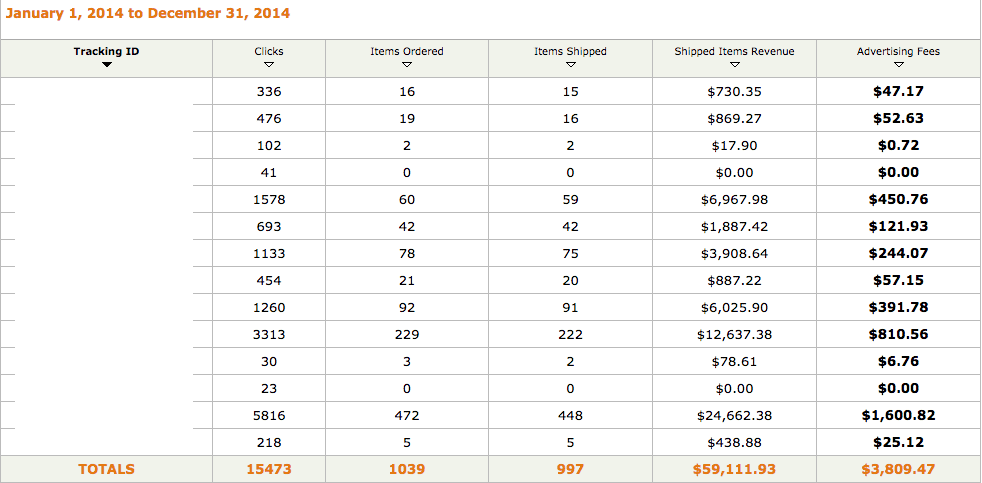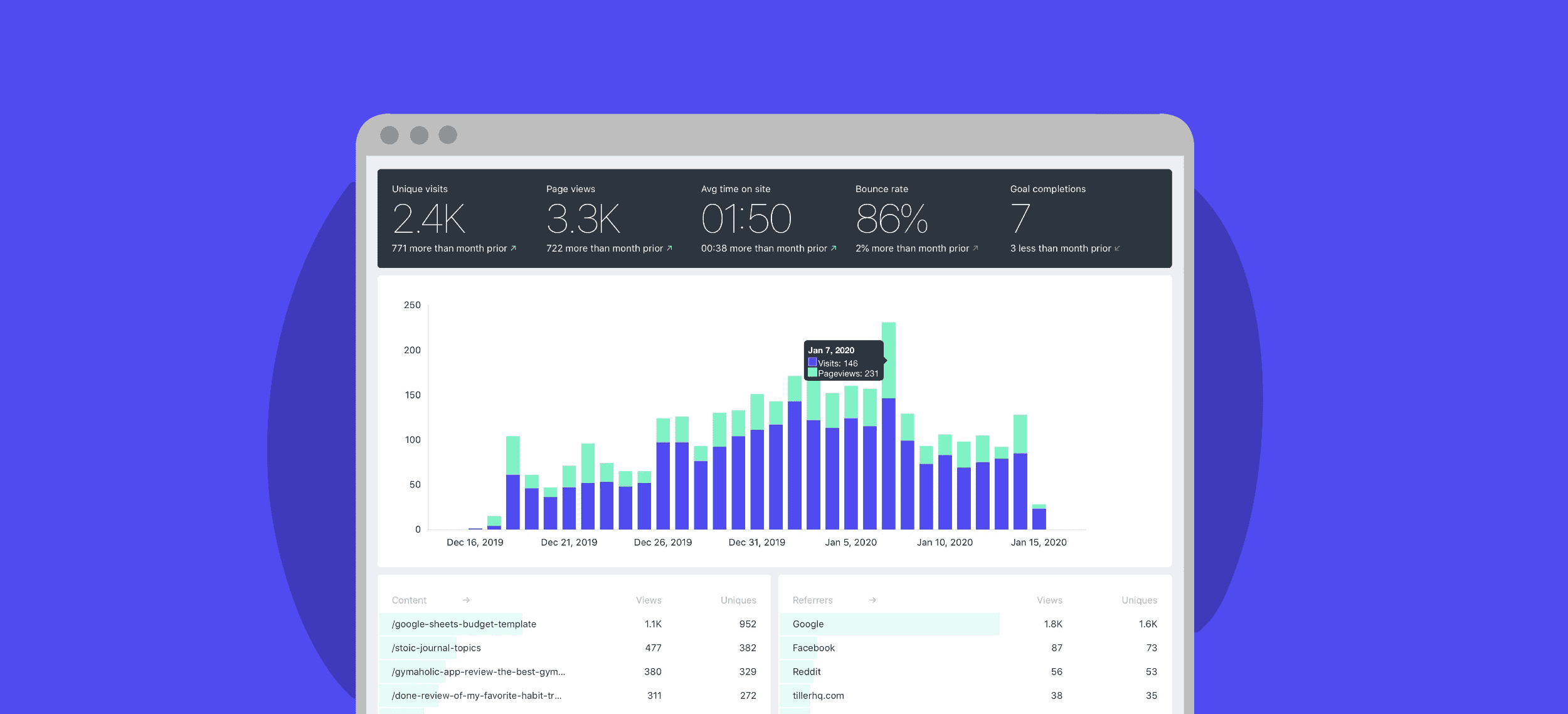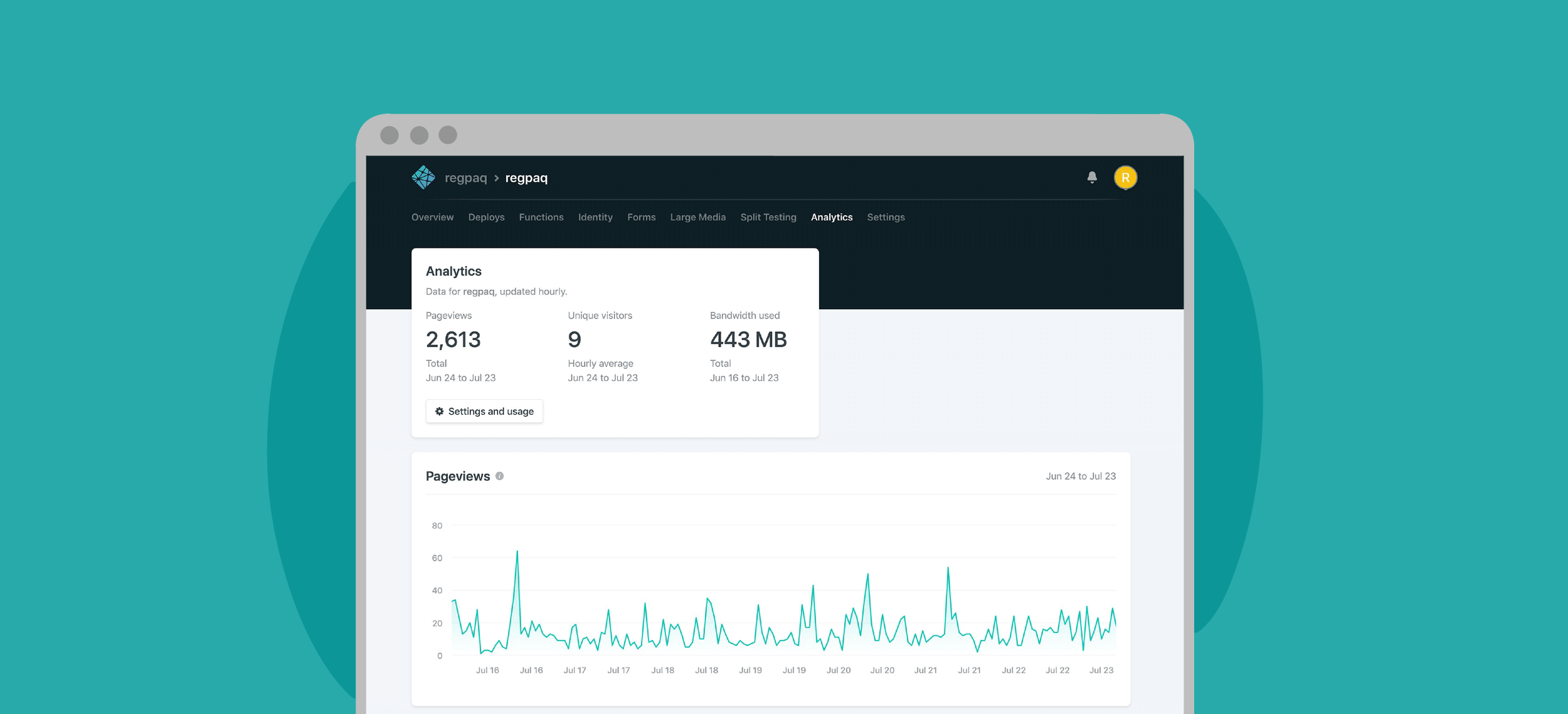I Made $317 / Mo. From Two Amazon Niche Sites Last Year
And here’s how I did it.

Towards the end of 2014, I was really sad and maybe even depressed, although I’m hesitant to use the word. Nothing was going right.
I spent a lot of time and money on private blog networks (PBN) and the network I was using was “targeted” by Google and they deindexed nearly all the domains. Looking back, it was foolish to put all my sites (even client sites) into one network, let alone a public network that was advertised (hint) as private.
I used it to develop a seamless workflow to rank sites. For the most part, it was working. I spent months finding the right writer, developing standard operating procedures (SOP), and based my whole pricing structure of my “one man” agency on this model.
Then it crashed. My site’s ranking tanked. My clients’ ranks tanked. I had to explain to them that their domains were useless and it was all my fault. It was hard and it took me a while to tell them, because I wanted to have a solution in place. I figured out a solution and thankfully they stayed with me until I moved to an established agency.
The end of 2014 sucked. It halted my progression of my one-man agency that I was so excited to write about. Now I don’t really care to write any more about it. My interest in growing it is gone even though I’m still working in it and still accepting new client projects.
So while my service business stalled, I was thankful that I had built and bought Amazon niche sites to help diversify my income. Even though my niche sites were still hit with the same penalty, they are still making money albeit just a fraction of their total potential.
My First Full Year as an Active Amazon Associate
With my two niche sites that I decided to stop working on, I was still able to get a decent paycheck from them. After seeing the same amount come in every month, I got used to seeing it and maybe I took them for granted.
But I took a second look at it, and I’m proud of how much they made. I can’t even remember the last time I worked on them and since they’ve been running on their own for a long time, I’m going to use the word that so many people hate — passive income.
Here is a screenshot of 2014 revenue total from Amazon.

Note: broken down by tracking ID (which I used for different pages) not by month.
Averaged over twelve months, $3,809.47 comes to $317/month. I built these sites hoping one of them could make $2,000/month one day so you can see how my expectations disappointed me.
But reflecting on everything now, $317 extra each month from doing basically nothing is actually a pretty good side income. It covers my car payment completely. Or it covers my monthly grocery bill. Or instead of using it to pay bills, I could invest the earnings into another Amazon niche site, which is something I’m considering heavily.
So while I had always thought these two sites were failures, I think I can change my attitude and call them mild successes. A stepping stone to a better Amazon niche site. If I continue to make more sites, I’m bound to finally hit one out of the park and at the least, create multiple sites of the same success compounding my income.
A Quick Recap of How I Did It
If you haven’t started a niche site before, just start one. It’s not very complicated. There aren’t many hidden secrets you must know in order to succeed. All it really takes is some hard and consistent work in the right direction. Just start. If your first site makes just $100/month (easy to do) then great! Keep working on it if you think it has legs and if not use that money to invest in content for your next site.
Start a habit of dedicating 1 hour per day to making your site:
This is going to be a quick guide with links to helpful resources and some of my notes where needed. I’m going to refrain from talking about things that have already been said elsewhere and just link to it.
Step 1: Topic Selection and Keyword Research
Proper research is very important before you start doing anything and buying a domain. But don’t research too much, only just as much as you need to.
Tung Tran has a brilliantly thorough and straight to the point guide on keyword research. Looking over his post again, I don’t think you need any other guide on how to do keyword research. He recommends a paid software, Long Tail Pro. I have it, but I don’t think it’s necessary even though it does save time. Just use the free Google Keyword Planner tool.
Step 2: Buy a Domain and Set Up Hosting
Can’t go too wrong with anything here. Just pick a “brandable” domain and not a spammy sounding name with your keyword in it. When I bought my vacuum niche site, the domain name was bestcanistervacuums.net and I since changed it to consumervacuums.com.
The major benefit of these kinds of domain names is it makes it easy to build links without receiving a penalty. You will be allowed to build links with your brand’s name as the anchor text, but if your domain has your main keyword in it (ex: “best canister vacuum”) you can’t use that too much in your anchor text or you could risk getting a penalty for it.
Also, you’ll want to grab all the social media handles for your site. That means, Facebook, Twitter, Instagram, Pinterest, etc. This doesn’t mean you need to use all the channels. I recommend just using one — the one that you’ve found your target audience uses the most. Be where your target audience is.
Step 3: Create a Content Calendar
Content is the most important thing with building a niche site. Good content will bring you readers, will keep people reading, will convince people to buy the products you use/recommend, and cause people to link to it.
The niche sites that last a long time will have good content that people want to read. To get help, find online communities where your niche’s target audience is. For example, if you’re niche site is centered around cooking products, your content should be about recipes with great photos. It would help if you actually made the recipes and took the pictures yourself. You could also make YouTube videos and subtly linking to the products you use to make the recipe.
When you discover what good content in your niche is, you’ll need to create it. A content calendar helps. A content calendar is simply a calendar of when you’ll be publishing content on your site. Quality is always important, but typically the more the better. More content means you have more chances to be found or linked to.
I use Evernote to take notes and the calendar on Basecamp to keep me moving. However, I know a lot of people use gmail and other Google services so I thought I’d link to this great guide on how to use Google Calendar to create a content calendar.
Begin writing the content yourself. At least once a week is something I recommend. If you have the capital, investing in a good content writer (native speaker with considerable knowledge on your topic) is good.
How To Discover What Content to Create
- Reddit is usually my number one place to see what kind of content my target audience likes. If you can find a subreddit on your exact topic, look at the top posts of all time and make your way down. If there is no subreddit on your exact topic, look for overlapping subreddits. Going back to our cooking topic, find subreddits where cooking is important. r/fitness, r/bodybuilding, r/keto, r/paleo, etc.
- Search online for forums or communities around your topic. See what they post about and find common questions
- Search Yahoo Answers
- Look at magazines at your grocery store
- Look on Pinterest or other social media channels
Step 4: Make Your Website Look Nice
Design should not be neglected. A lot of people skip over this, but it’s a big differentiator if your site looks nice and is easy to read when there are many other sites writing on the same topics. Again, high quality pictures (Instagram/Pinterest worthy) is almost a must.
Use a responsive design so it’s nice for mobile users. Use a relatively small content width (like on this site and BuzzFeed) to make content more inviting to read. Relatively bigger fonts (around 16px) also help. Get a good logo by either using 99 designs or find someone to make you one on reddit.com/r/forhire, r/graphic_design, or r/entrepreneur (sometimes you will see posts on these last two subreddits offering logo work for or for cheap to help build their portfolio). Also consider Fiverr if you want to keep costs low.
If you’re using WordPress, check out themeforest.net for great themes. Make sure the theme you pick is responsive and makes it easy to use Google Fonts.
Step 5: Build an Email List from Day One
Something I wish I did was start creating an email list when I launched my niche sites. I just didn’t think anyone would sign up so I never did it. But now looking back, I wish I did because I’m sure people would have signed up if I had the option available.
An email list will be really beneficial if your content is good. Don’t always think about making a sale from your email list, but more building a brand and a readership. You can put your sign up forms in the sidebar, at the end of posts, or in a popup (I use OptinMonster). For email service providers, I like to use Campaign Monitor.
To help build your list, it’s good to give something away for signing up like a short ebook or a link to a private page. Both need to have excellent content and something readers actually want in order for this to be effective. Always test different optin headlines to see what works. Sometimes no bonus works better.
Step 6: Get Your Content Noticed
In other words, you will need traffic. There are three main ways to get traffic: organic search, paid search, and social. Big mistake #1: Relying on only one way to get traffic.
The big two are organic and social, while paid may not be cost effective for an Amazon niche site. Creating content that people want to read is number one, but you’ll want your posts and pages to be search engine friendly, too.
I made the mistake of relying all on organic traffic, so when my domains got penalized, I was left with a mere trickle of traffic. I will use social more next time, but I haven’t had too much experience with it yet for niche sites.
Organic Search Tips
- Use Brian Dean’s guide for on page SEO — it’s all you need to know and do.
- Do lots of blog comments. I used Doug Cunnington’s guide on this. I outsourced this to my assistant. Also comment on high traffic pages where comments are allowed and link to your better resource. This surprisingly works really well for targeted traffic.
- Generally, building links manually here and there is typically a waste of time unless you really know what you’re doing and where to build them.
- Don’t buy links, unless you really know what you’re doing
Social Tips
Social is great because not only can it get you targeted traffic, but it can also lead to natural links. The more people see it, the more it has a chance to be linked to by a reader who liked it. So social also helps with your organic search traffic over time.
- Submit every post to Reddit to the appropriate subreddit. Be careful with this and read the subreddit rules. Sometimes submitting a text only post with the content all there and then just a link to the source (your niche site) works better. Get a feel for the subreddit first and don’t start spamming.
- Use Pinterest (here is a short guide, but still looking for something better)
- Upload videos to YouTube with optimized titles and descriptions. Go on Fiverr to have someone make a transcript to post on there, too.
Other Content Marketing Tips
Requirement: Good content.
- Brian Dean’s Skyscraper technique
- Brian Dean’s Guest Posting Guide
Step 7: Optimize Your Site for Conversions
With an Amazon niche site, a conversion is someone buying something on Amazon using your affiliate link so you get a commission. This is the number one thing you want people to do on your site. Some people could make the argument that getting someone’s email is more important as you’d be able to make multiple sales over time from the same person. Not saying that is wrong, but I did not do that with my niche sites.
Here are some quick optimization tips:
- Create a quick “Top 3 [Main Amazon Item],” “[Main Amazon Item] Comparison Chart,” etc that is linked in the navigation or sidebar so it’s on every page. I always get the most conversions from these pages.
- Use multiple Amazon affiliate tracking codes for the same site. I use different ones on all my main pages so I can get an easier look to see which pages are the big earners. Calculate the conversion rates of these pages (clicks to Amazon/unique visitors AND orders/unique visitors). Use this data to improve low performing pages and link more often to the top performing pages in other pages of your content.
- Use product images and link them to the Amazon product (with your affiliate link of course)
- Build comparison tables using the WP plugin, Tablepress.
- Get the plugin EazyAzon by Chris Guthrie. This plugin is amazing and makes getting your affiliate links AND images super fast.
- Limit (or don’t use at all) any other monetization methods (adsense for example). You don’t want to take away from your main goal, getting people on Amazon. However, you could test multiple methods and see if it earns you more, but I don’t hear much of people having more success by using both Adsense and Amazon.
- Reinvest earnings for more content to create more conversion opportunities
Once you get your site up and running with these basics, you should be expanding your knowledge and skills with more research.
The most important takeaway from this post is that you don’t need to know everything before you get started. Just use these basics, get your site started and earning some money, then look to expand your site and skills further (email marketing, better design, interactive content, etc).
Niche sites are simple, it just takes time for them to “take off.” If this is your first site, and your site ends up failing, don’t be too upset. Learn from what went right and what went wrong and start another site. Don’t expect to earn a 1$ sooner than 3 months. I didn’t make real money until my third niche site.
I hope this guide was helpful. If you have links to great rescues or would like to ask me a question about building a niche site, please link/ask away in the comments below!
Update: I posted this blog post to Reddit’s Entrepreneur subreddit and to my surprise received over 800 upvotes and 300 comments. If you’d like to see what other people are saying about it and all the 50+ questions I answered, check it out here:

You might also enjoy
-

Fathom Analytics Review (From a Marketer)
The privacy-focused, Google hating, indie analytics company. Is it worth switching?
-

Netlify Analytics Review (From a Marketer)
Is it everything the industry has been waiting for?
-

Blogging on Medium vs Self Hosted Blog
Why I stopped blogging on Medium and moved to a static, self hosted blog.
-

I got this from a client: “I was expecting a lot more from you.”
That’s what a client told me to my face in a meeting.
Never Miss an Article
Get notified by email when I publish a new article.
